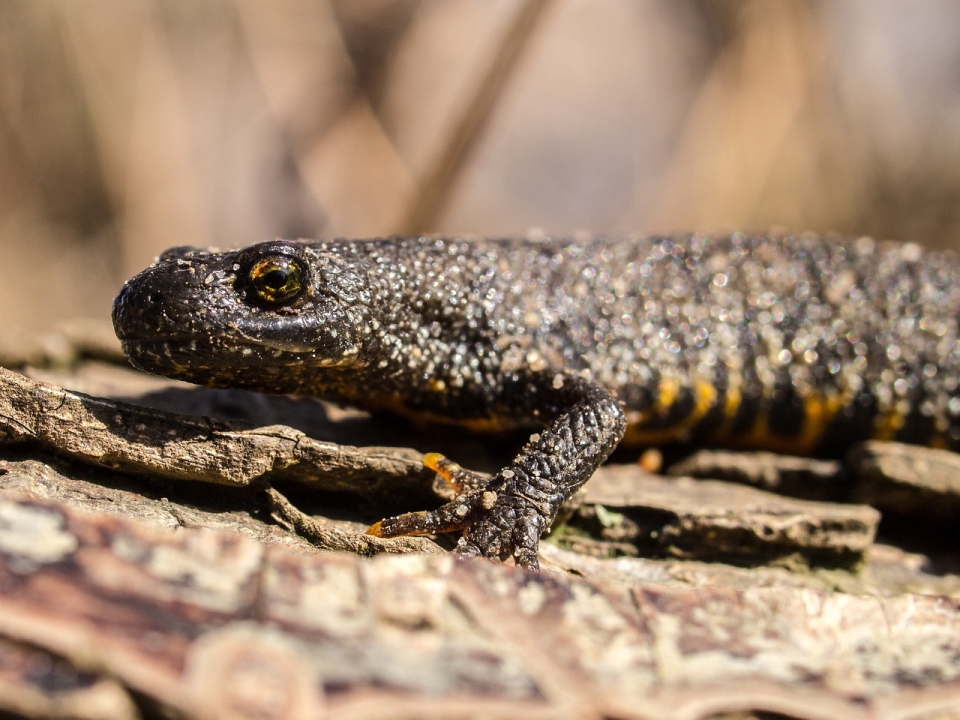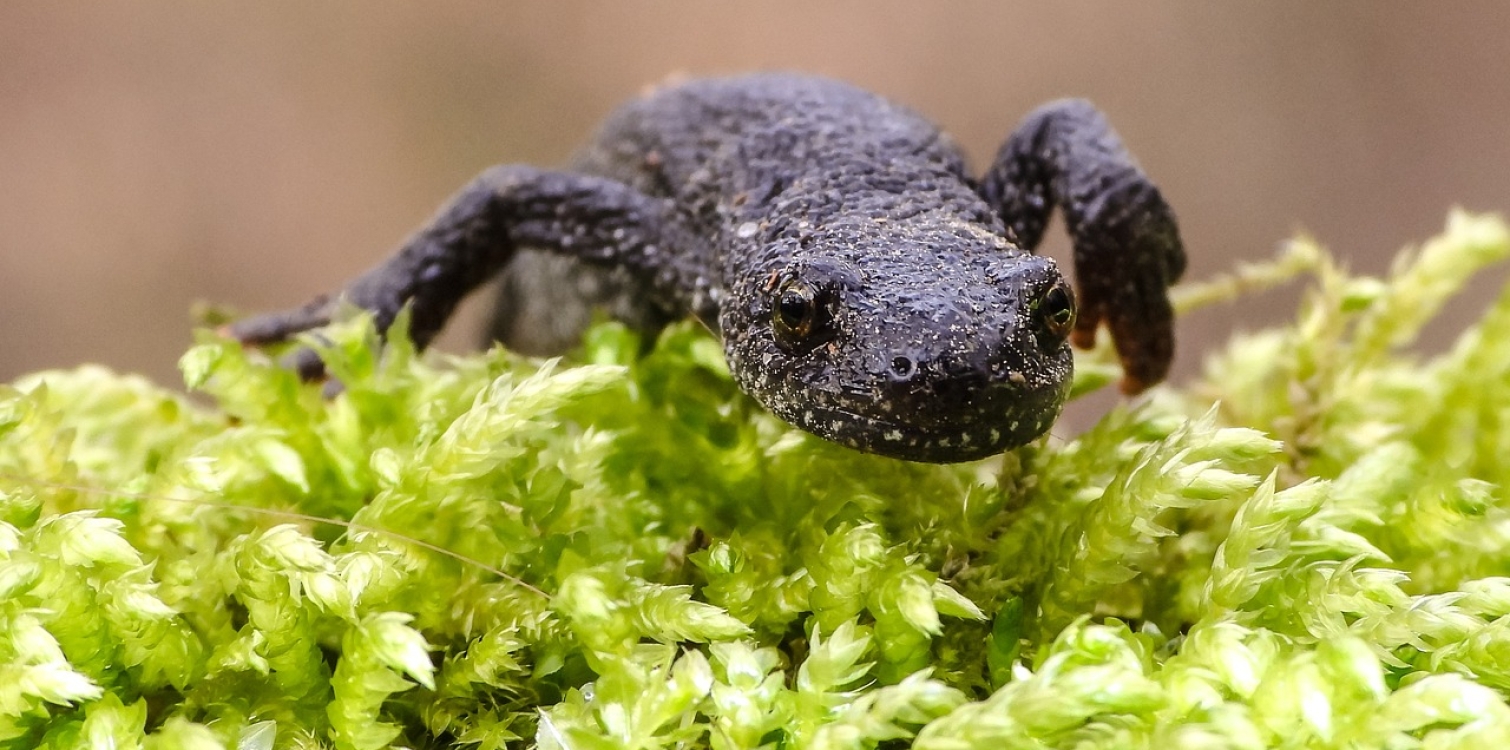Newts hibernate on land and migrate to water in the spring, where they mate and lay eggs. They inhabit still or slow-moving waters without fish and are typical residents of sinkhole ponds. They usually stay near the bottom and are active only in the morning and evening.
In Triglav National Park, three species of newts can be found: the Alpine newt, the Italian crested newt, and the smooth newt. The Alpine newt is the easiest to encounter, while the Italian crested newt is much harder to spot.
- During the breeding season, males become brightly colored to attract females.
-
As the name suggests, the Italian crested newt is the largest among newts and can reach a size of up to 25 cm, though it usually measures between 10 and 18 cm.
-
Its belly is orange, and individual newts can be distinguished by the pattern of dark spots on it. It has a dark-colored throat with light spots, which differentiates it from the other two species.
-
During the breeding season, males develop a tall, jagged crest on their back. They also have a silvery-white stripe on their tail, which acts as a signal to females.
-
Females and juveniles often have a continuous yellow stripe along their back.

The Italian crested newt is protected in Slovenia! As a vulnerable species, it is listed on the Red List.
DID YOU KNOW?
- Newts are capable of regenerating damaged and severed limbs.
- Newts cannot survive in waters with fish, as fish prey on their eggs and larvae.
- They feed on aquatic and terrestrial insects.
Was this page helpful?
Thank you.
Thank you.

